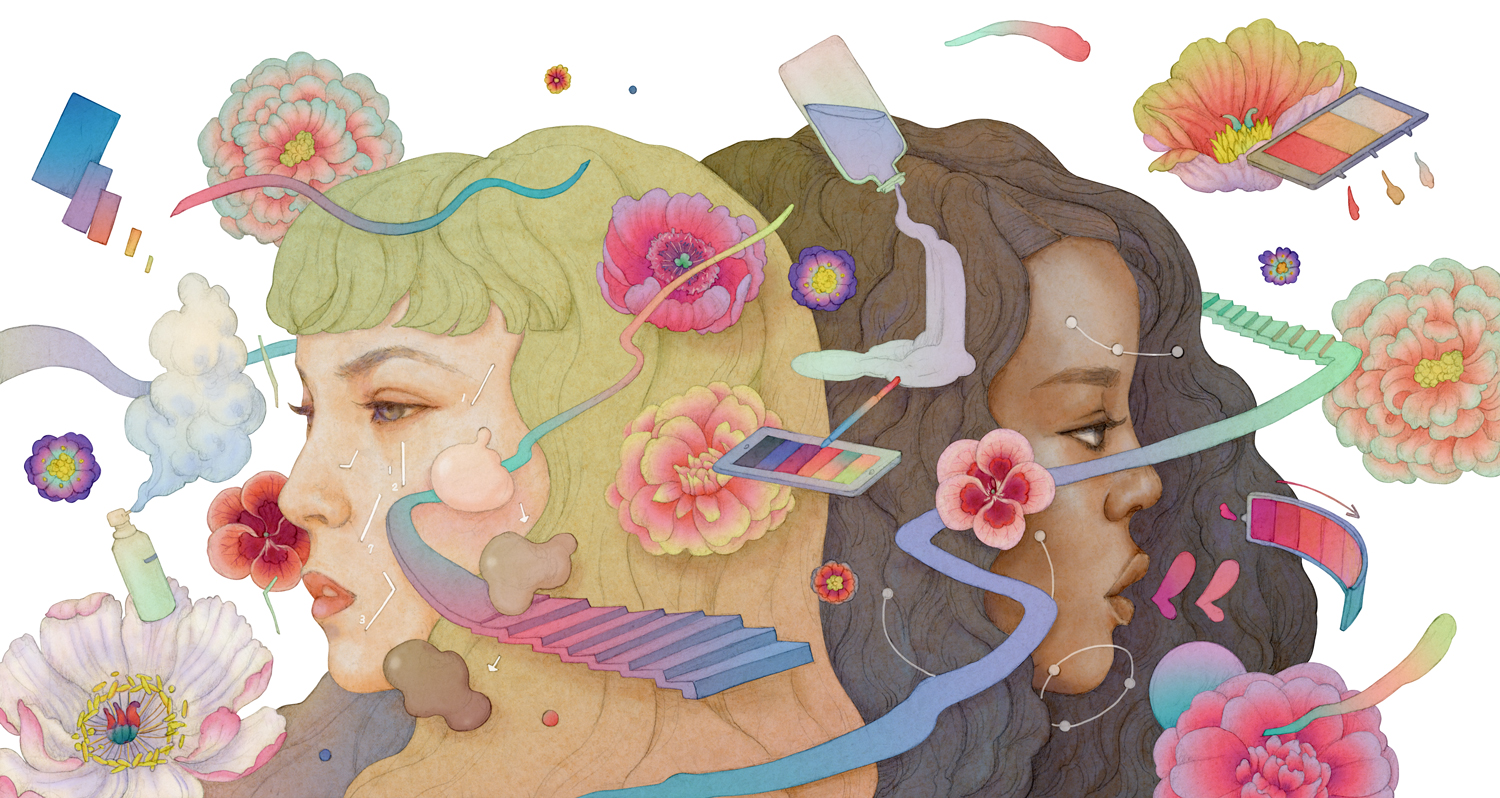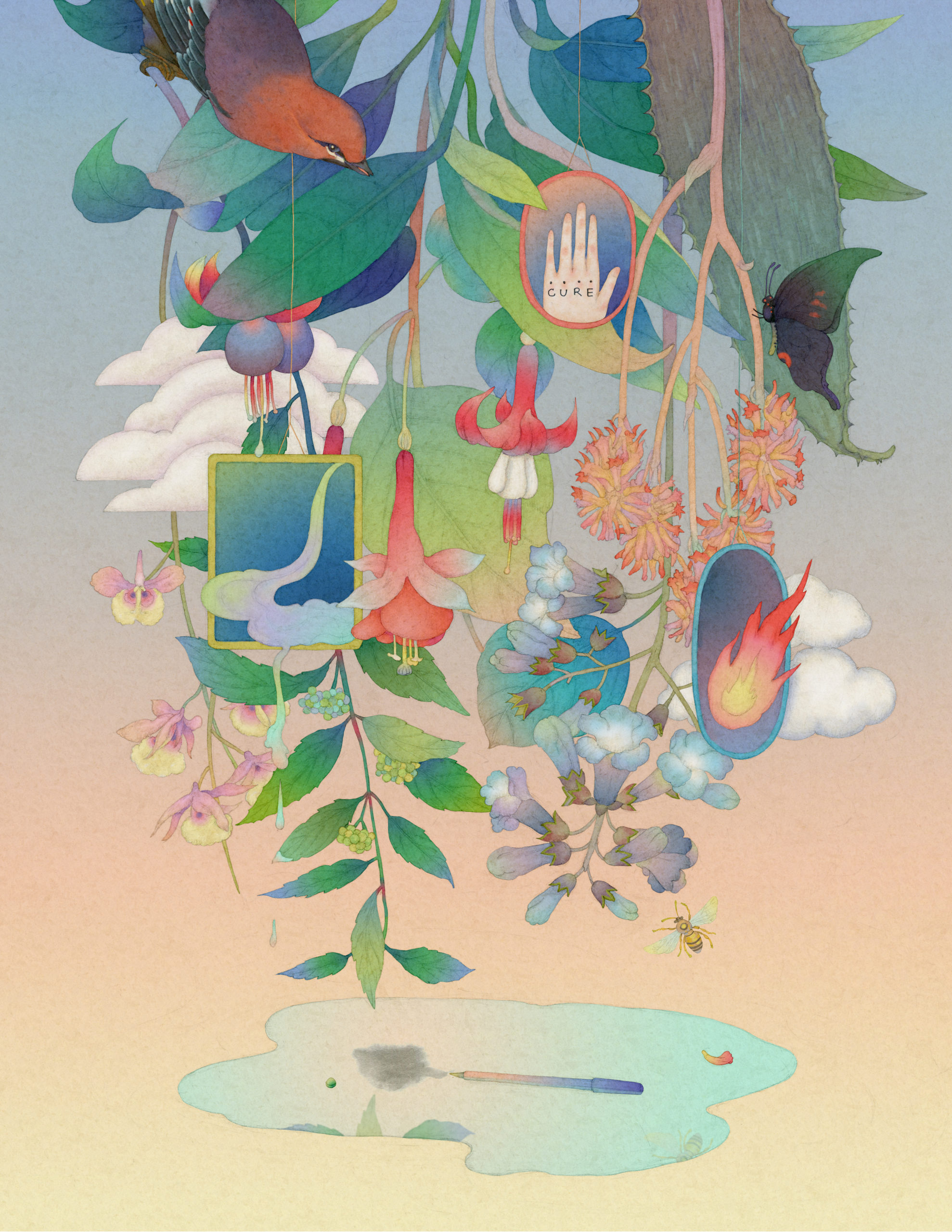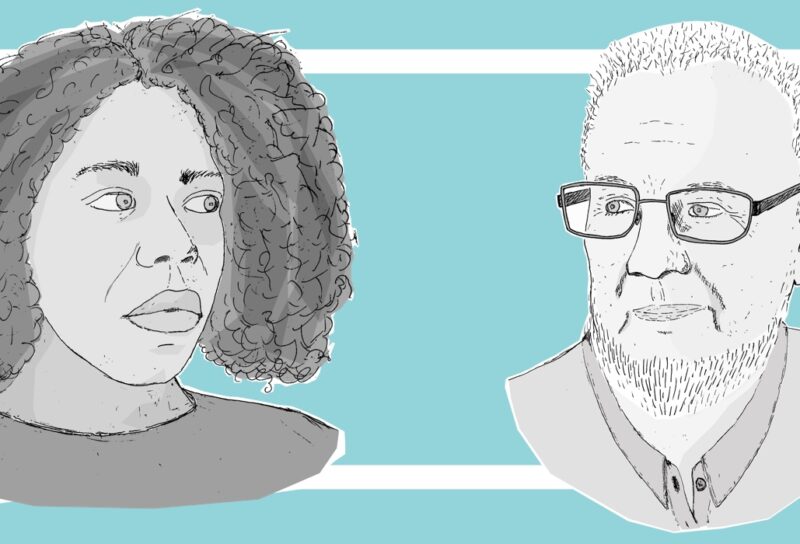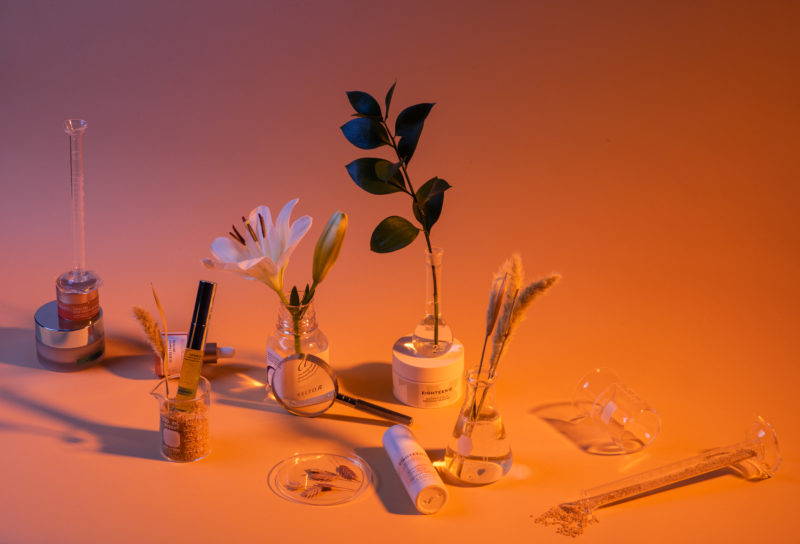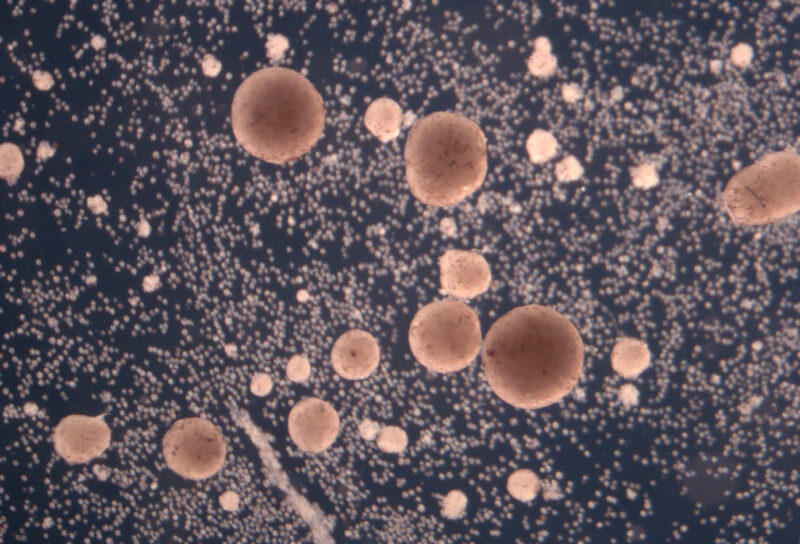What do you consider natural? What’s beautiful to you? These questions may sound trite but they’re fraught enough that any one person’s answer will reveal a good deal about how they see the world. Our conceptions of nature and beauty are heavily constructed, but that hasn’t stopped them from evolving in tandem, and being constantly renegotiated by prevailing technologies and attitudes. How has this spectrum evolved in our lifetimes? What does “natural beauty” mean in the age of social media and synthetic biology? To cut to the heart of these questions, we sat down with two pioneers known for thinking about these subjects critically and imaginatively. Beauty entrepreneur Jasmina Aganovic and artist Ani Liu work in very different fields, but each deal with the complex and sometimes contradictory ways that technology, culture, and politics can mediate our aesthetic experiences of the world. In the conversation that follows, Jasmina and Ani offer a trove of insight into what factors will shape the future of beauty.
Christina: I wanted to talk to you two because you come from very different backgrounds, but both think critically about beauty — more broadly, how science and technology inform and mediate our aesthetic experiences. I’d love to start with your stories. What got you interested in these questions?
Ani: I got my start during a meta-moment in architecture school, when I suddenly became aware of how the tools I was using constricted the types of things I could create. The design software was literally designing how we designed! I started to create artwork that dealt with this cycle of reproduction, which connects to every aspect of our lives. In my practice, I try to unpack the societal implications of technological framing, and create opportunities for poetic transformation. And this path of inquiry just stuck. After architecture school, I ended up at the MIT Media Lab, where I was lucky enough to be introduced to synthetic biology and other disciplines of biology that really blew my mind. Biology fascinated me because it promised an intimate relationship with technology, at times so intimate that the delineations become invisible. I felt the energy of research in its early stages, and my imagination went wild thinking about the many ways we could remake ourselves.
Jasmina: My path was also twisty, turny, unexpected. I started working in the beauty industry after getting my degree in chemical and biological engineering at MIT. I had a long-standing passion for beauty because of its creativity, and the powerful role it plays in self-care and self-expression. I entered the industry thinking innovation would speak for itself, but instead found a more complex conversation with the consumer. The question became: how do you get people to accept a nascent and early-stage technology in their lives? In the beauty industry, that’s such an interesting process because there’s so much emotion and storytelling at play. People care about the identity as much as the ingredients. Is the product natural? That is determined by the interplay of a diverse set of factors. There are many different ways of constructing naturalness.
I dealt with these questions most pointedly when I started Mother Dirt, a skin microbiome company. The key technology we use is a live microbe that comes from the dirt and once used to exist on human skin, but we cleaned it away as a result of modern hygiene practices. People tend to have very positive associations with the word natural, but bacteria is entirely natural and yet our perception of it is overwhelmingly negative. The beauty industry has spent so long telling people that you need to kill the bacteria to have healthy, clean skin. We are trying to change that thinking. To consumers, naturalness is associated with something being plant-based, and also with a vague ethical sense of its creation occurring in harmony with the world. The beauty industry has advanced a very constrained interpretation of naturalness, one that few products actually fulfill on second look. The real world is a lot more ambiguous than that.
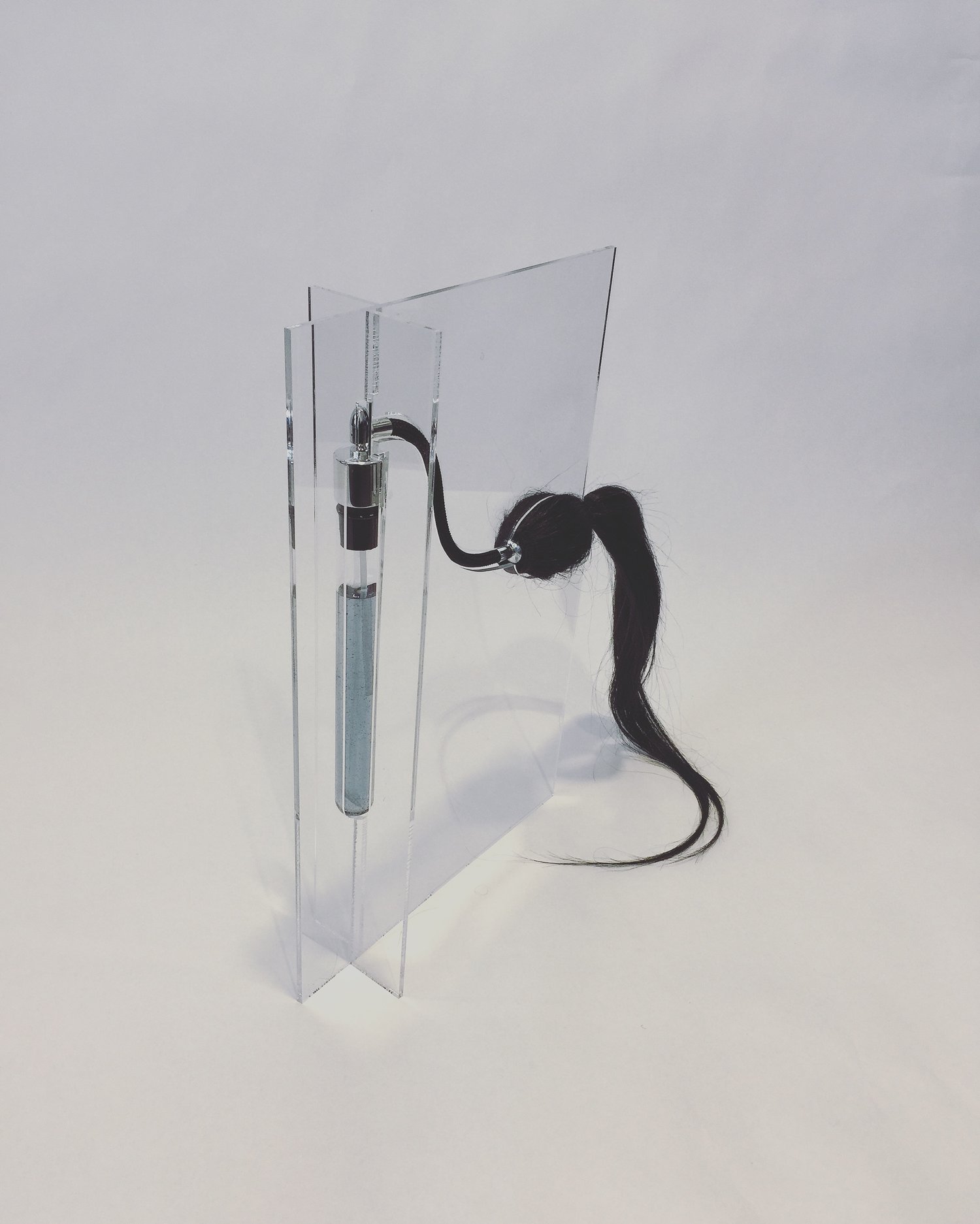
Christina: We tend to have this very linear way of thinking how these technologies come about: we do science and it inspires technology, and then that can be used to make whatever we want. We like to say that science is objective — “it doesn’t care about your beliefs” — but things are more messy and circular than that. The technologies dictate the science and the science informs new technology. These tools shape how we see the world. They transform our aesthetic experiences, shifting the border between what’s natural and unnatural, which is a lot more fluid than we’d like to think.
Ani: It really is. I like thinking about how we construct those notions of nature. For example, I grew up in New York City, and I used to think that Central Park was a natural oasis. I literally equated it with a forest. Every time I read a book that mentioned a forest, I thought of Central Park. Of course, city parks have things like lighting and paved roads and very carefully horticulturally cultivated plants, but that was nature to me.
Jasmina: At Mother Dirt, I always viewed what we do as a new manifestation of something that is tried and true by nature, but with science applied, so that it can be used in a controlled fashion. We want to reintroduce bacteria into people’s hygiene routines. In the past, these cultures got going on our skin because we were outside constantly. We were swimming in lakes, rivers and streams. That’s unfeasible for a lot of people now. You can’t roll around in Central Park. Our environment has changed so much, and our soil contents are reflecting that. Even here in Cambridge, there’s a lot of lead in the soil. What if we could recreate a clean experience in a very deliberate and effective fashion? Our branding and imagery are about reconnecting with nature, but, ironically, our manufacturing process happens in a hyper-sterile clean room and we wear spacesuits. We don’t want any other bugs to slip in; we just want this one bug and we want it in the right abundance. It’s complicated to say the least, and wouldn’t seem very “natural” to the outside observer.
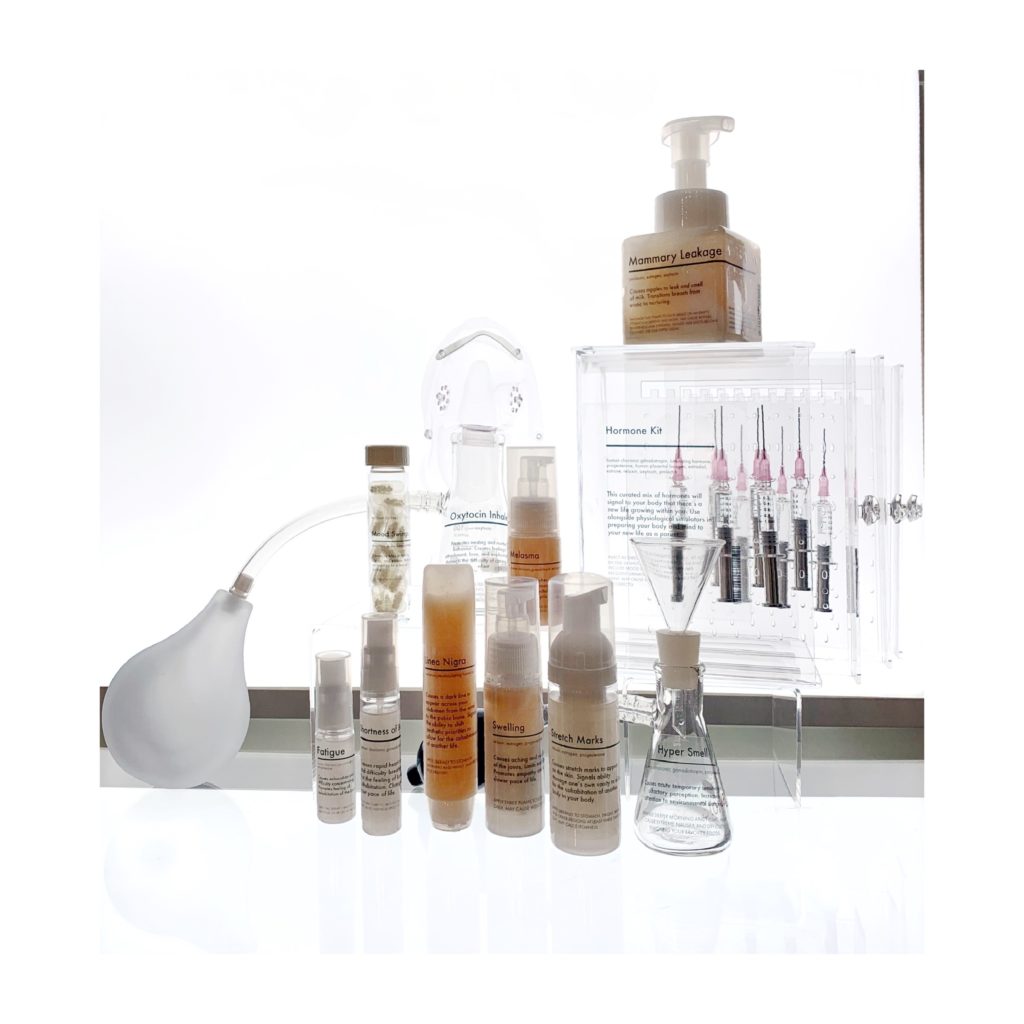
Christina: There’s something special here about art, and its relationship with science, because it shows us how things are, and asks if it could be a different way. It helps us process the ambiguities that exist. Ani, the first time we met was at Ginkgo, and you asked if it would be possible to create the smell of your boyfriend using bacteria. You wanted to simulate this very complex natural smell using synthetic biology as a way to explore the emotion of the relationship between two people.
Ani: Smells have a big impact on my life. People in extreme distress often describe seeing their life flashing before their eyes; I’d be more likely to go through a medley of memorable smells. The project you’re describing was a response to the prevalence of digital simulations at the time, such as virtual reality, augmented reality. I kept thinking about how I’m an animal longing for natural sensory experiences, and I wondered how much of that complexity could be reproduced through technology.
I’ve become really interested in the relationship between molecules, smells, and emotions. This sounds cheesy, but after I gave birth I became enamored with oxytocin, because I was flooded with good feelings. In my sleep-deprived haze, I started to question my direct attachment to my daughter, and wonder whether that attachment could be simulated via oxytocin. If I was injected with oxytocin while looking at a banana or something, would I have the same urge to nurture it?
Christina: That’s a great question, one I suspect an artist and a scientist might answer differently. The scientist doesn’t necessarily think that you lose something by reducing it down to its molecules. How did you come to think about it?
Ani: It felt strange to me that all of these significant experiences in life, like giving birth, or falling in love, could just be waterfalls of molecular simulations in my brain. There was some part of me that wanted transcendent moments like these to be unexplainable. Perhaps this is why I am forever stuck at the intersection between art and science. I often find myself chasing the visceral, the emotional, and then logic and reason for answers, going back and forth and so on.
Jasmina: I wish that more scientists would be bold about approaching these nebulous questions. There’s this view that science is the best, the end-all be-all, and if your science isn’t good, I don’t want to talk to you. Science is important all by itself, but there’s also so much value in seeing its dialogue with other viewpoints, and recognizing that you need to connect with people through a multitude of methods, languages, and emotions. So, I really like what you are saying, Ani, about how art can help bridge the gap between science and experience.
Christina: I think that’s really important, because in a way it makes science feel more fragile. Saying that science is constructed doesn’t mean it’s a lie. It just means it takes work to make it and to maintain its standards. In nature, it also takes work to keep something wild. It takes work to keep Central Park flourishing. For people, this is true too. I think women know this intuitively; looking “natural” takes effort.
Jasmina: And what is considered a natural look always changes! Fuller eyebrows have been popular recently, and so many of us have tried to find a way to make it look native to our faces. That’s a fascinating part of beauty: we change these ideas ourselves.
I grew up in New York City, and I used to think that Central Park was a natural oasis. Every time I read a book that mentioned a forest, I thought of Central Park.
ANI LIU
Ani: We can really train how our minds see beauty. As an artist, I believe that the viewer completes the artwork, bringing their own history, culture, gender identity, and experience to their particular interpretation of a piece. Then they bring that artwork to the next artwork they see, and so on. What we see co-constructs our aesthetic experiences. I think a similar thing happens when we consume lots of media. It too trains our eyes and minds on certain modes of interpretation and models of beauty. During my awkward, self-conscious teenage years, I remember a pivotal moment when I realized that supermodels were constructed forms of beauty. I saw a photo before and after Photoshop and I realized that these icons of beauty don’t really exist. This has escalated to a point now where there are social media influencers who aren’t human at all. They are completely AI generated from the ground up, and yet young girls still look to these fictions as a form of aspirational beauty.
Jasmina: That reminds me of that article in The New Yorker about Instagram’s influence on our aesthetic predilections, and how filters and face-tunes have created a kind of generic face. The algorithm has this tendency to flatten everything into a composite of the greatest hits across each of the races. It kind of favors white women, but it is also capable of manufacturing a look of a rootless exoticism. It’s a great paradox — embracing diversity while simultaneously creating something so homogenous.
Ani: Exactly. These beautifying filters widen your eyes, they lighten your skin. Those are very political views of beauty. I am teaching a speculative design course, and I had a student who was looking at beauty contests judged by AI. In her project, she was investigating the beauty-judging algorithms by creating masks that changed her proportions slightly to hack the system and get higher scores. That was her way of pinpointing the algorithm’s biases. But then halfway through her project, she cut her hair and was disqualified from the beauty contest because the algorithm stopped identifying her as female. Just because of the length of her hair! So yeah, very biased notions of beauty are reflected in algorithms.
I often wonder: if we had new kinds of tools, could we start to ask entirely different kinds of questions about beauty?
JASMINA AGANOVIC
Christina: This is all so interesting. Let’s pull this all together by talking about the future. With Grow, something we say a lot is that the story of synthetic biology is still being written. We want to bring people to the table to write it together and shape the vision for what we all hope it to be. How do you see these beauty and ideas of naturalness evolving in future? What do you imagine, hope for, and want?
Jasmina: At the beginning, we talked about the tools that we use, especially the ones for beauty, and how they constrain us. I often wonder: if we had new kinds of tools, could we start to ask entirely different kinds of questions about beauty? It’s my hope that with more innovation and more tools available to consumers and companies alike, people will start to express themselves in a way that is less homogenous, more diverse, more artistic even.
Ani: I very much agree. It’s important to broaden our offerings to be more inclusive. For instance, in recent years, we’ve seen makeup that serves a wider range of skin tones. That was an important shift — to acknowledge that there’s no “normal” skin tone. The other day I was reading an article about how Crayola is doing something similar, coming out with a box of crayons that had colors to reflect more skin tones. I wonder what a similar expansion of “palette” could be in biological design.
Jasmina: I have faith in future generations. I think that they have been more deeply affected by what is happening on the planet than our generation has. Their impatience will create opportunities for creative solutions that we can’t even envision now. I think it’s our responsibility to put the right tools in their hands, so that they can run with it. I think they have the will to tear down the arbitrary distinctions in our society, and appreciate the messiness, the muddied lines between art and science and politics, this amorphous soup of magic.
Christina: The future is no borders, no disciplines, no gender, all an amorphous soup of magic.
This interview was edited for length and clarity.
